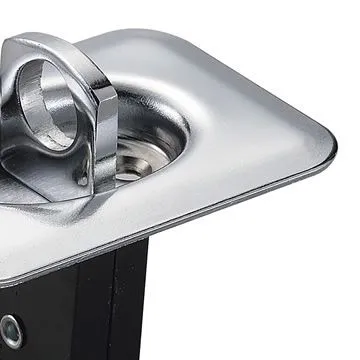8 月 . 20, 2024 02:51 Back to list
Advantages of Using Mineral Fiber Panels in Building Construction and Design
The Versatility of Mineral Fiber Panels in Modern Construction
In the ever-evolving landscape of construction materials, mineral fiber panels have emerged as a favored choice among architects, builders, and designers. Known for their remarkable properties, these panels offer a blend of performance, sustainability, and aesthetics that meet the demands of contemporary building practices. This article explores the unique characteristics of mineral fiber panels, their applications, and their benefits in various construction projects.
Mineral fiber panels, primarily composed of natural or synthetic fibers like glass wool and rock wool, are renowned for their excellent thermal and acoustic insulation properties. These panels can significantly reduce heat transfer, making buildings more energy-efficient and helping to lower heating and cooling costs. Moreover, their sound absorption qualities contribute to quieter indoor environments, which is particularly beneficial in commercial settings like offices, schools, and hospitals.
One of the standout features of mineral fiber panels is their fire-resistant properties. Being non-combustible, these panels can withstand high temperatures, offering an additional layer of safety in the event of a fire. This characteristic is especially critical in high-rise buildings and commercial spaces, where fire safety regulations are stringent. The ability of mineral fiber panels to inhibit the spread of flames not only protects property but also saves lives, making them a preferred choice in fire-sensitive areas.
The versatility of mineral fiber panels extends to their aesthetic appeal. Available in various sizes, textures, and finishes, they can be tailored to fit the specific design requirements of any project. Whether it’s a modern office, a retail space, or a school, mineral fiber panels can seamlessly integrate into a variety of architectural styles. Additionally, they can be painted or coated to match the desired décor, allowing for creative freedom in design while maintaining functionality.
mineral fiber panels

Sustainability is another significant advantage of mineral fiber panels. Many products in this category are manufactured from recycled materials, contributing to environmentally friendly construction practices. By opting for mineral fiber panels, builders can reduce their carbon footprint and promote sustainable building initiatives. Furthermore, these panels are often tested for low volatile organic compound (VOC) emissions, ensuring better indoor air quality for occupants.
Installation of mineral fiber panels is generally straightforward, which can lead to time and cost savings during the construction process. Lightweight and easy to handle, these panels can be efficiently mounted on walls and ceilings, reducing labor costs. Additionally, their compatibility with various mounting systems enhances their usability in diverse applications, from residential homes to large commercial complexes.
As the need for energy-efficient and safer building solutions continues to rise, the demand for mineral fiber panels is expected to grow. Their blend of thermal insulation, soundproofing, fire resistance, and aesthetic versatility makes them an excellent material choice for a wide array of applications. With increasing awareness of environmental issues, the sustainable aspect of mineral fiber panels further solidifies their place within the construction industry.
In conclusion, mineral fiber panels represent a significant advancement in building materials that cater to the demands of modern construction. Their numerous advantages, ranging from energy efficiency and fire safety to aesthetic flexibility and sustainability, make them an invaluable asset in both commercial and residential projects. As architects and builders strive to create safer, more efficient, and stylish spaces, mineral fiber panels will undoubtedly play a vital role in shaping the future of the construction industry.
-
Revolutionizing Interior Design with Ceilings t grid Suspended SystemNewsOct.29,2024
-
Revolutionizing Ceiling Design with ceiling access panel with Gypsum Tile WaterproofNewsOct.29,2024
-
Revolutionizing Interior Design with PVC Gypsum Ceiling: A Comprehensive GuideNewsOct.29,2024
-
Elevating Interior Design with High quality Mineral Fiber Ceiling TilesNewsOct.29,2024
-
Revolutionizing Interior Design with PVC Gypsum Ceiling: A Comprehensive GuideNewsOct.29,2024
-
Elevating Interior Design with High-Quality Mineral Fiber Ceiling Tiles: A Comprehensive GuideNewsOct.29,2024







